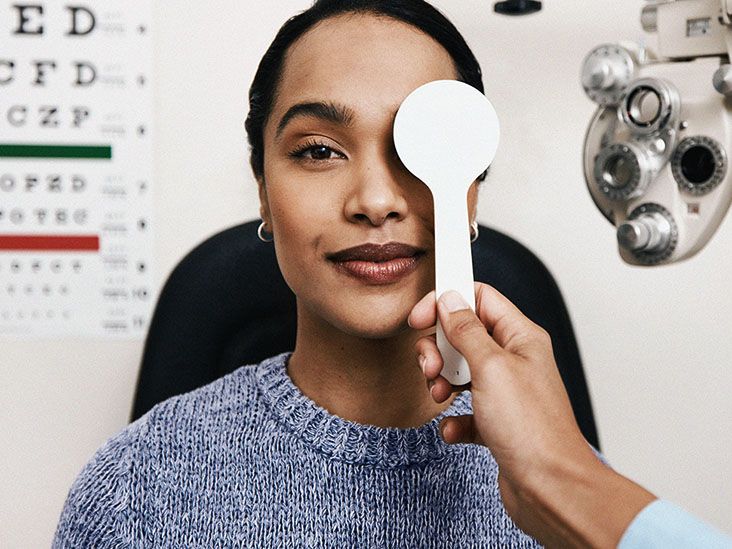Every Little Thing You Need to Learn About the most recent Developments in Glaucoma Therapy and Eyecare
In the realm of ocular health and wellness, improvements in the therapy and monitoring of glaucoma have actually been continuously evolving, paving the way for enhanced patient care and outcomes. From cutting-edge diagnostic tools that provide unmatched insights right into the illness development to ingenious surgical methods that promise greater precision and quicker recovery times, the landscape of glaucoma treatment is going through a considerable change.
Advanced Diagnostic Technologies
Advanced diagnostic technologies play an essential role in the early discovery and surveillance of glaucoma, permitting extra reliable therapy and administration of the condition. Amongst these innovations, optical coherence tomography (OCT) stands apart as a non-invasive imaging technique that provides thorough cross-sectional pictures of the retina, optic nerve head, and retinal nerve fiber layer. This high-resolution imaging assists clinicians analyze architectural changes in the eye created by glaucoma, enabling them to intervene without delay.
Furthermore, visual area testing, such as automated perimetry, is one more important analysis device for examining glaucoma-related vision loss - retina service near me. This test gauges the sensitivity of a patient's aesthetic area, assisting to spot any locations of vision loss or distortion. By integrating OCT imaging with aesthetic field screening, doctor can obtain a thorough understanding of the disease's development and tailor therapy plans accordingly
Minimally Intrusive Procedure
In the realm of glaucoma monitoring, the emphasis changes in the direction of minimally invasive surgeries as a positive strategy to address the development of the problem following sophisticated diagnostic assessments such as optical comprehensibility tomography (OCT) and aesthetic field testing. Minimally intrusive glaucoma surgeries (MIGS) have gotten appeal due to their effectiveness in minimizing intraocular stress while minimizing the dangers and recuperation times linked with traditional glaucoma surgical treatments. These treatments are generally carried out with tiny lacerations, often together with cataract surgical treatment, making them much less intrusive and extra comfy for people.
Some common MIGS procedures include trabecular micro-bypass stents, which improve the outflow of aqueous humor, and micro-sized implants that boost drainage in the eye. Additionally, laser procedures like selective laser trabeculoplasty (SLT) offer a non-invasive option for lowering intraocular pressure. By incorporating these minimally invasive techniques right into glaucoma monitoring, eye doctors can give people with reliable therapy choices that focus on security and quick recovery, ultimately boosting long-term end results for people with glaucoma.
Unique Medication Treatments
Arising medication therapies existing encouraging methods for improving the pharmacological management of glaucoma, offering cutting-edge strategies to resolve intraocular stress control and illness progression. One novel medicine treatment that has garnered focus is Rho kinase preventions. These medicines work by targeting the Rho kinase path, which contributes in controling the tone of the trabecular meshwork, the eye's drainage system. By inhibiting this path, Rho kinase inhibitors help to boost liquid humor outflow, thereby minimizing intraocular pressure.

Telemedicine and Remote Tracking
With the development of unique drug treatments broadening the therapy landscape for glaucoma, the assimilation of telemedicine and remote tracking emerges as a crucial component in improving patient care and condition management. Telemedicine enables eye treatment professionals to from another location analyze clients, give assessments, and screen condition progression without the requirement for in-person brows through. This is particularly valuable for glaucoma patients who need constant monitoring to avoid vision loss. Remote surveillance modern technologies enable clients to determine their intraocular stress or aesthetic area at home, permitting timely modifications to therapy strategies. By utilizing telemedicine and remote monitoring, health care suppliers can boost accessibility to care, improve patient compliance, and spot prospective problems early, causing much better results for people with glaucoma. Furthermore, these modern technologies use ease for people, specifically those in remote locations or with flexibility constraints, by lowering the demand for constant facility sees. Accepting telemedicine and remote tracking in glaucoma administration represents a significant advancement in optimizing person treatment and therapy effectiveness.
Personalized Treatment Techniques
Progressing beyond standard one-size-fits-all approaches, individualized therapy techniques customized to specific patient attributes are revolutionizing the administration of glaucoma. By tailoring therapy plans based on variables such as age, disease seriousness, way of living, and various other health conditions, eye doctors can enhance and maximize end results patient fulfillment.
Tailored therapy approaches in glaucoma involve an extensive evaluation of each person's one-of-a-kind profile. This may include genetic testing to recognize details threat factors, imaging strategies to analyze architectural changes in the eye, and functional tests to assess visual field loss. By integrating these personalized insights, doctor can establish targeted treatments that address the underlying reasons of glaucoma development for every individual.
Furthermore, developments in innovation have enabled the growth of tailored therapy choices such as minimally invasive glaucoma surgeries (MIGS) customized to the person's certain requirements - cataract care service. These treatments use effective intraocular stress control with less problems, enhancing the total high quality of care for glaucoma patients. Welcoming individualized treatment strategies marks a significant standard shift in glaucoma management, stressing precision medication to provide customized options for better person results
Conclusion
To conclude, the current developments in glaucoma therapy and eyecare include progressed diagnostic modern technologies, minimally invasive operations, unique drug treatments, telemedicine and remote monitoring, and individualized treatment techniques. These advancements are changing the way we deal with and detect glaucoma, providing even more personalized and efficient alternatives for clients. By remaining current with these Source advancements, health care professionals can offer far better care and improve results for people with glaucoma.
With the advancement of unique medication treatments expanding the treatment landscape for glaucoma, the assimilation of telemedicine and remote monitoring emerges as a crucial component in improving person care and illness monitoring. refractive surgeries in al. Welcoming telemedicine and remote monitoring in glaucoma administration stands for a significant improvement in maximizing patient care and treatment effectiveness
In verdict, the latest developments in glaucoma therapy and eyecare consist of progressed analysis modern technologies, minimally invasive surgical procedures, novel medication therapies, telemedicine and remote tracking, and tailored therapy approaches.